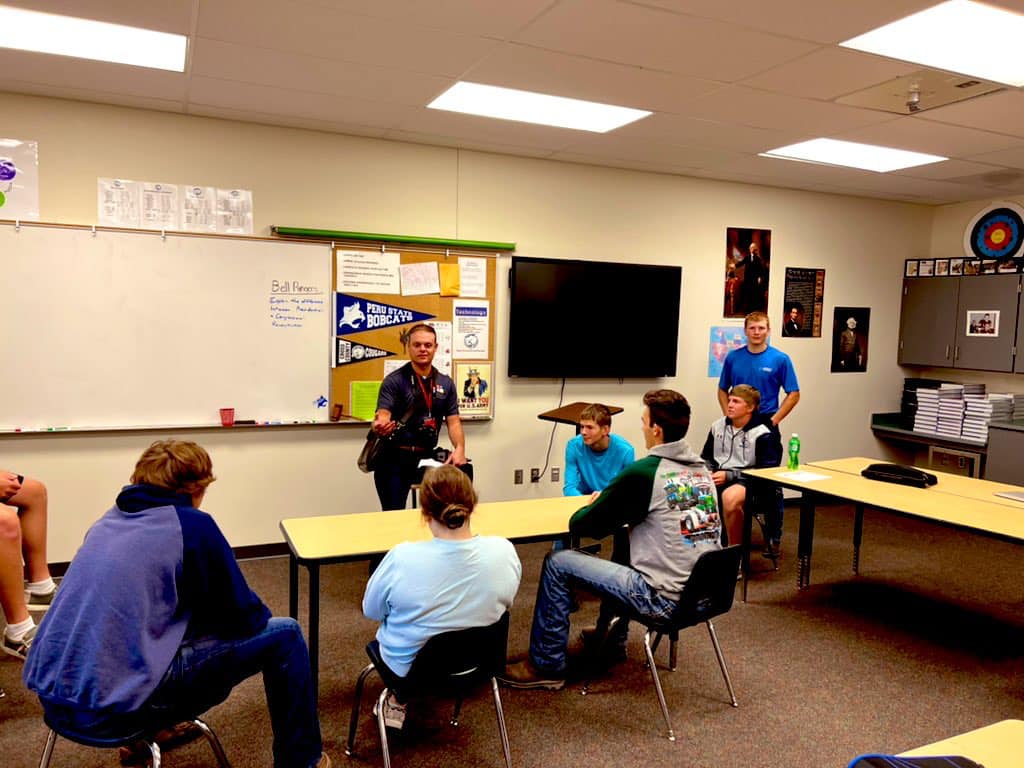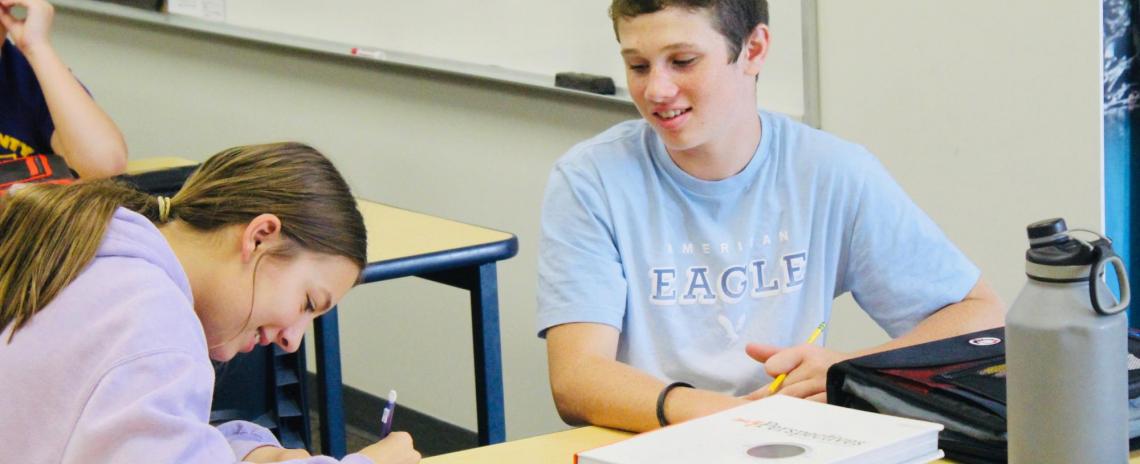A Quest for Cogency: Cross County's School Improvement Plan and the ambitious team behind the vision
A Quest for Cogency: Cross County's School Improvement Plan and the ambitious team behind the vision
By Tyler Dahlgren
Oftentimes, it happens in the blink of an eye. Just like that.
A Cross County teacher will pose a question with no direct route to the answer or present a problem with no one distinct solution, and their students, be them kindergarteners, fifth-graders or high school seniors, will feel their way to the correct answer.
Oftentimes, this is when the lightbulb goes off, when a Cross County problem-solver realizes the tool they’ve used to complete their quest for cogency.
“We felt like critical thinking encompassed everything we were searching for when developing our next school improvement plan cycle,” said resource teacher Ashley Oquist. “We also felt like critical thinking was a skill that would benefit students now and for the rest of their lives.”
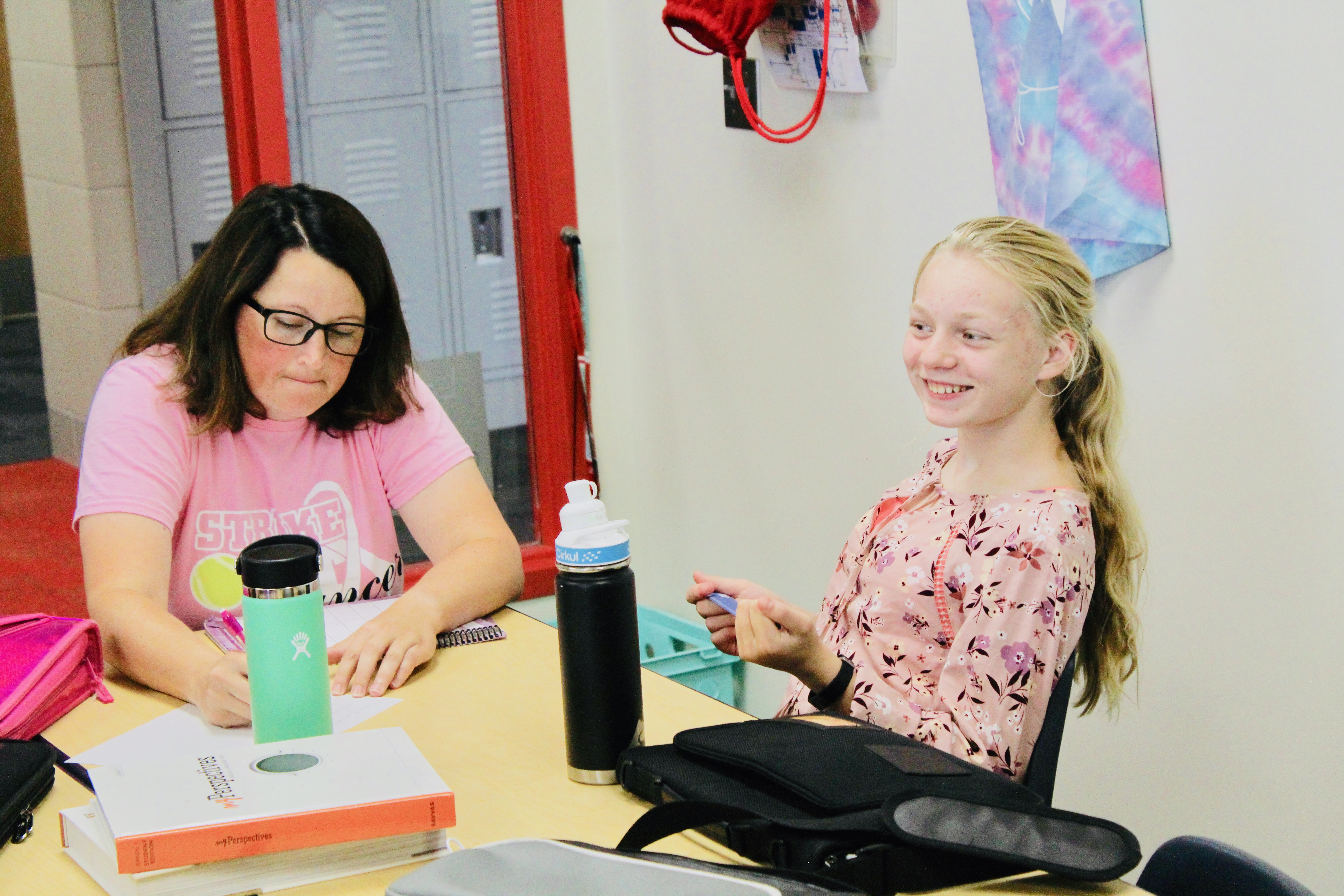
The district’s School Improvement Team (SIT), an ambitious group of educators with little fear of failure, rarely backs away from a challenge. And school improvement plans, as any educator can attest, are always a challenge.
This cycle’s goal, to intertwine critical thinking with curriculum at all levels, K through 12, was a massive undertaking for Cross County Community Schools, which sits just outside of Stromsburg, 20 miles north of I-80 along Highway 81. They could have gone a different direction, ventured down a smoother path, but that’s not their style.
This cycle, a five-year journey that’s really more like 10, is going to be difficult. But the juice, the team is already starting to see in Year 3, is more than worth the squeeze.
“Critical thinking, the ability to problem solve, is something that can be incorporated into everything we do,” said high school math teacher Jennifer Lange, who added that it blends well with the Marzano Instructional Method Cross County has followed for years.

After successfully completing a 10-year focus on vocabulary, the SIT dove into data to land on its next target. They asked for the input of stakeholders around Stromsburg, business owners and community members and students, too.
“In our discussions, we decided that the root of literary analysis, being able to analyze and apply number sense, was the ability to think critically,” said Johanna Nielsen, who has taught social studies, reading and careers and entrepreneurship during her 11 years at Cross County. “When you get down to the basic root of what those two are asking you to do, they have a common theme. So why not focus on that common theme?”
After pinpointing their focus, the team went to work developing their own unique and innovative critical thinking model. They presented the model to their fellow teachers, most of whom were excited about the challenge and the relatively blank canvas to start from.
“It’s important to share that we are also learning along with everyone else,” said third-grade teacher Rachel Branting, whose enthusiasm for teaching alone can light up a classroom (it certainly did during NPSA’s visit). “We are not experts on this, but we are trying our best to help develop it and lead the school along this process.”
The staff was embarking on a journey, one with no clear cut destination, but they were doing it together. Around here, they’ve learned the importance of camaraderie and cooperation. It’s the foundation for each of these school improvement cycles. The springboard to student success.
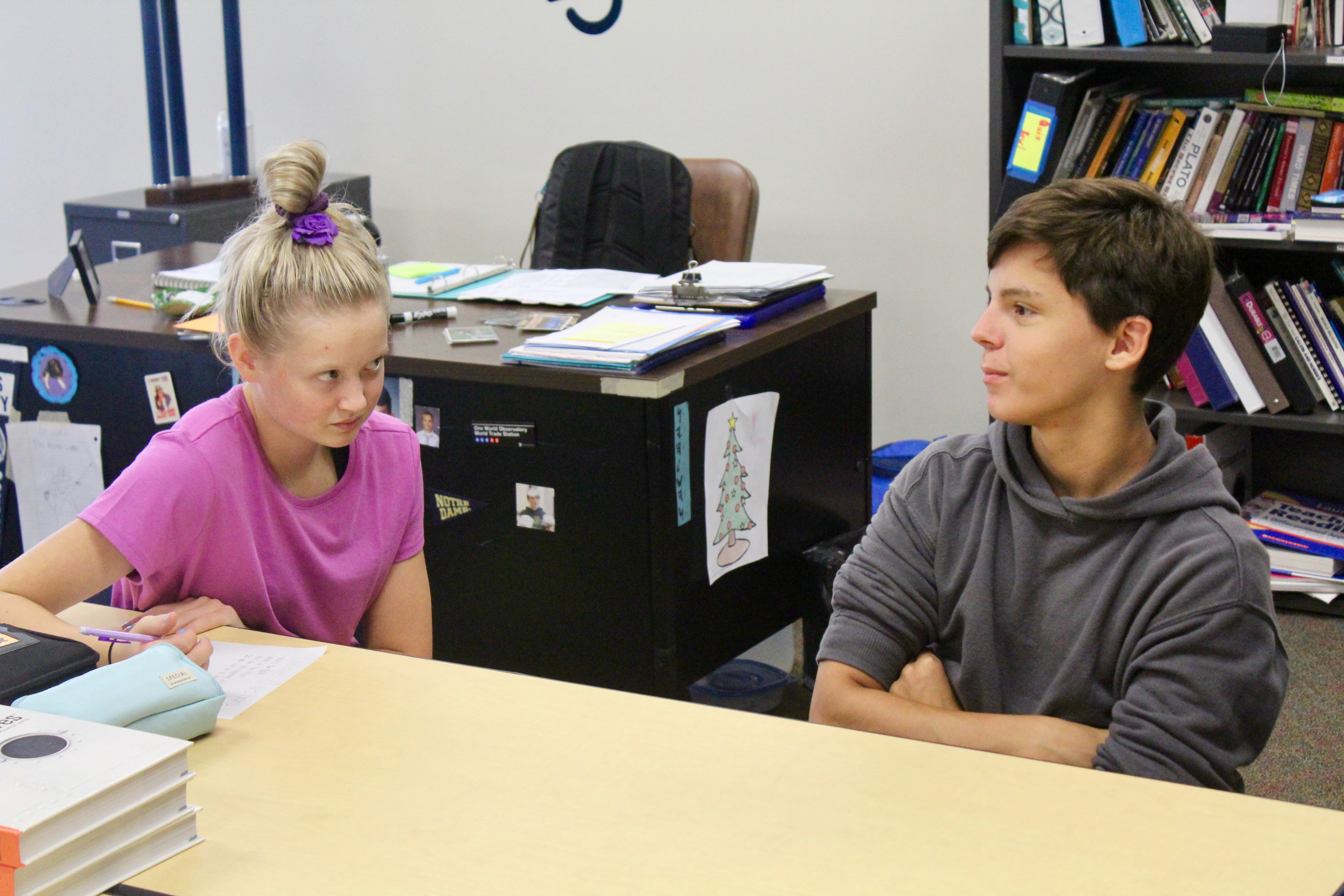
“Along the way, we started to learn for ourselves that the framework of critical thinking is learning to understand different perspectives,” Lange added.
Last year, teachers started to incorporate critical thinking into their lesson plans. To do so, Cross County teachers cut loose with creativity. One kindergarten teacher even called upon a coding bot to help detail the sequencing of a story. The results were inarguably amazing.
“That showed that even five-year-olds can do this and use this in a good way,” said Branting. “The students benefit from this, without even realizing it.”
It’s not just the kids who are evolving, either. Teachers have felt themselves grow, too. By observing their students work their way through a problem and into a solution, they’re getting a glimpse into how their brains work. Perspective is a powerful thing, and an educator can never have enough.
“We were on a math topic, and I could not understand why one of my students couldn’t understand it,” said Oquist. “I tried all these different things, and then, finally, we did a lesson using this and she was explaining her thought process to me and I was then able to put my finger on where she was going wrong. It’s been so helpful and opened my eyes to the fact that there are just so many different ways of thinking.”
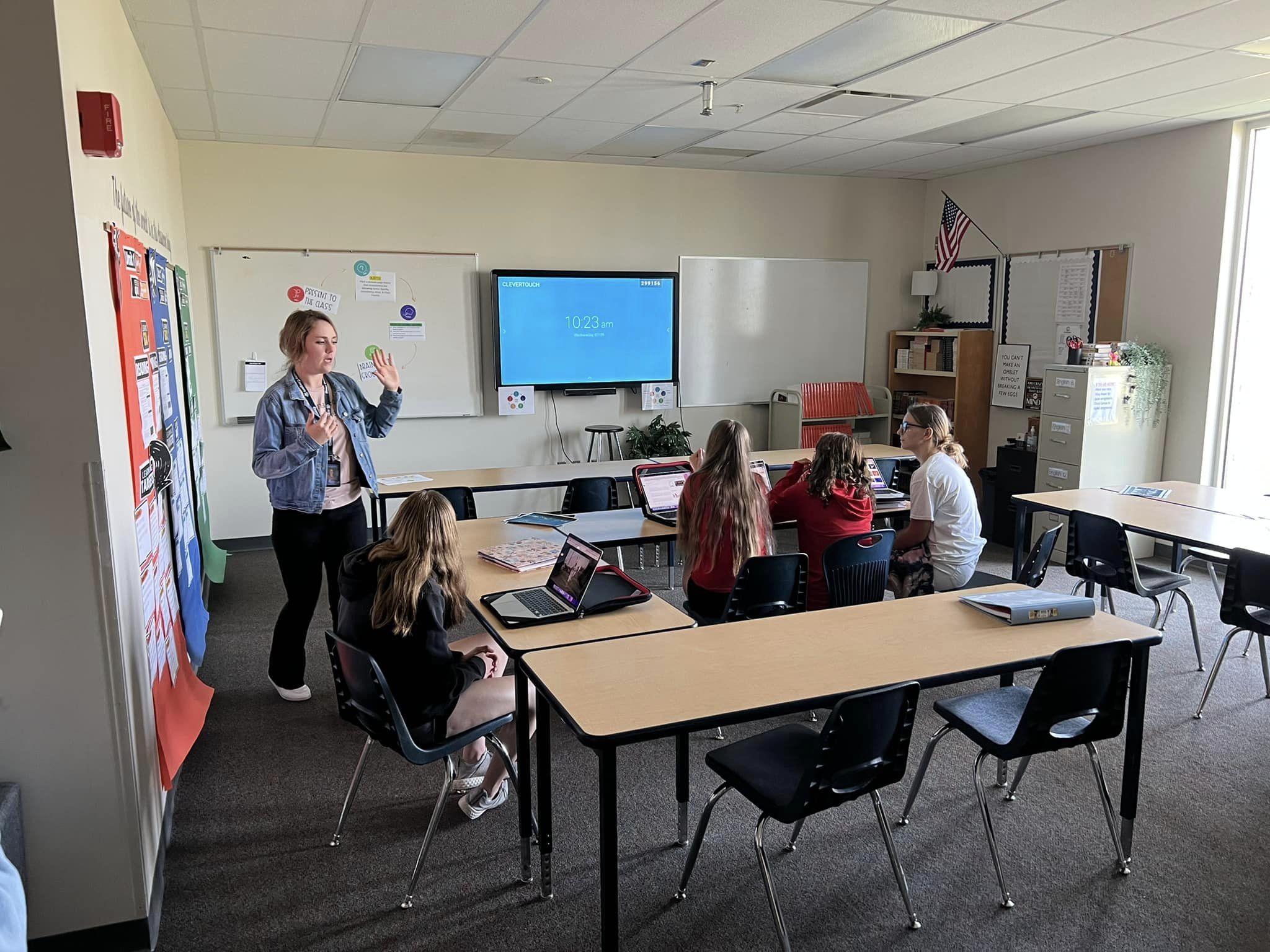
Nielsen, whose lesson on this day had to do with different types of questions, open-ended and close-ended (if you can’t ask questions, you can’t move through the model, she said), feels the students have enjoyed being part of the process. The staff has been deliberate with introducing the model to their students, but they’re already sensing momentum.
“It’s hard and uncomfortable at times, but it does lead to growth,” she continued.
It’s a good thing they have each other, Nielsen added. Starting a model from scratch is no easy task.
“We’re not asking teachers to recreate new lessons,” said library and technology integration teacher Kathy Lundstrom, who has been with the district for 14 years. “We’re not telling them or asking them to pull that model into what they’re already doing. And they’ve responded. We’ve seen that innovation in classrooms across the district. Students are recognizing it too, which is the idea.”

And when the aforementioned light bulb goes off? Well, as a teacher there’s simply no better feeling.
“Teachers are realizing that we’re doing this revert critical thinking all the time, we just didn’t have a model for it or a process to think about it,” said Mckenzie Goplin, who has taught second-grade at Cross County for five years. “It’s forcing teachers to slow down and be more conscious of their lessons. The payoff is in those lightbulb moments, when a student works their way through something and it hits them and they’re like ‘Hey, that was critical thinking!’”
Intention is another key ingredient to making this thing work. Some teachers, like Branting, a self-described linear thinker, were worried at first. The thought of working some magical critical thinking component into each lesson play was borderline daunting. It was difficult for her to wrap her brain around how this was going to work, but she took it one step at a time. Pretty soon, each step became easier to take.
“We’re not changing anything that I might normally do, we’re just slowing down and talking through our processes,” she said. “It’s forcing me to not do everything for them, and it’s showing them that not everything is just going to be handed to them.”
With all the information in the world a Google search away, it’s a fundamental lesson to learn. Especially as it pertains to growth, not just academically, but in other areas as well. The School Improvement Team understands the weight of this undertaking, and they appreciate the trust Cross County’s administration has shown in them to carry it out.

“It’s endearing, but it also comes with a lot of pressure,” said Oquist. “We’re all capable, and we depend on one another.”
Many of Cross County’s initiatives are staff-driven. That’s nothing new around here. Goplin said those responsibilities produce greater buy-in from the rest of the staff. Teachers welcome the high expectations placed on them by the district’s administration. Nielsen added that a common goal, mixed with a dose of honesty, has a way of bringing people together.
“That buy-in does say a lot about how our staff feels about kids and how invested they are in their ultimate success,” Branting said. “This is something that will truly help kids in the next stages of their lives, beyond their time here at Cross County. Being kid-focused is at the forefront for our staff.”

Watching this process unfold has filled superintendent Brent Hollinger with pride. He’s seen remarkable growth out of everyone in the district, and especially in his uber talented staff of teachers.
“What we have in them is well beyond trust,” Hollinger said. “It’s always a goal of every administration to not be top-driven. We’re now on our third school improvement cycle since I’ve been here, and our admin has had very little to do with any of them. That’s always what your dream is; for your teachers to feel ownership and see value in what you have in place.”
There’s no end goal, Goplin points out, no sand slipping through an hourglass and no finish line to cross.
Validation comes in those little lightbulb moments, the ones that fuel Cross County’s School Improvement Team. The ones they never want to let slip away.
“We know we’re always going to be striving to improve in whichever area we’re focusing on.”
